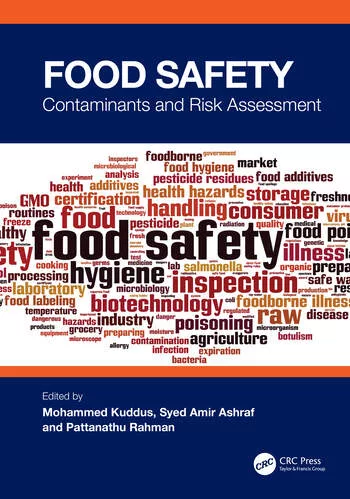Allergens & Cross-Contamination: Education vs. Ignorance

Approximately 15 million people live with food allergies, according to the Food Allergy Research & Education (FARE) group. Restaurants today are filled with guests who have become more educated but who are also sometimes fueled by media-fueled misinformation. Employees are sometimes just as guilty of being uneducated or misinformed. Both need to become more educated so each is on the same page when necessary.
Food Allergies & Intolerances Explained
Let’s clear up some differences between allergies, intolerances, sensitivities and irritations as they relate to food. An allergy can be mild-to-severe, causing symptoms ranging from mild hives to breathing issues, and may result in death in severe cases. An intolerance or sensitivity can cause mild-to-severe discomfort, and medical attention is sometimes needed. In the case of an irritation, it is often an annoyance and may cause discomfort, but medical attention is rarely needed.
What are these sinister food items causing all the trouble? The U.S. Centers for Disease Control and Prevention (CDC) refer to the most common food allergens as the “Big 8”—milk, eggs, fish, crustacean shellfish, wheat, soy, peanuts and tree nuts. Recently, corn and sesame have also been raising concerns.
In the case of an allergic reaction, physical symptoms are often apparent, and employees must be aware of these indications. Warning signs every foodservice employee should be aware of, and may need to call 911 about, are:
• Hives
• Itching
• Swelling
• Stomach pain
• Nausea or vomiting
• Diarrhea
• Sneezing
• Coughing or wheezing
• Shortness of breath
• Difficulty breathing or swallowing
• Swelling of airways
Restaurants always appreciate being provided with special dietary needs information ahead of time. By giving staff time to prepare, the wait will be lessened and the food will be handled properly. If a kitchen is limited on equipment or space, items may not be efficiently cleaned. Restaurants may not all carry products that meet a guests’ needs or exceptions. For severe allergies, guests must understand that cross-contamination cannot be avoided.
What Needs to Be Done?
Training and education are key. All hospitality organizations must make it a priority to train and educate their staff in sanitation and safety, including food allergy education. The National Restaurant Association (NRA) leads in training with the nationwide use of ServSafe, which certifies food service employees in safety, handling and sanitation. Organizations may choose—or may be required—to use a Hazard Analysis and Critical Control Points plan, or they may create an allergen assessment risk program. With either program, the risk must first be assessed and all unintentional cross-contamination must be noted. Then solutions for dealing with the risk must be decided. After setting management guidelines for possible contamination, the solution must then be communicated to employees, and a correction made. It is crucial that this be repeated and reassessed throughout the flow of food handling.
Handling & Avoiding Cross-Contamination
Some food products can be contaminated before they are handled by employees. This should be labeled by the manufacturer. Common examples are products processed in a plant with other products containing wheat or nuts. It is our obligation to notify our guests that such products are used. This can be done with a menu note, tabletop advertisement, and/or relayed by the wait staff.
Most allergen contaminations happen due to mishandling and mislabeling of food products. As food handlers, there are important steps we can take. These steps are recognized by CDC, the U.S. Food and Drug Administration (FDA) and NRA as ways to avoid cross-contamination:
• Use proper sanitary receiving guidelines (can be found at www.servsafe.com).
• Implement a personal hygiene program. Cross-contamination is possible from surfaces and people.
• Use reputable suppliers, and check all permits and licenses.
• Store all prepared food in areas separate from contaminants.
• Properly handle, clean and store products in areas away from contaminants.
• Wash and sanitize all equipment and small wares (use separate area or equipment when possible).
• Required training programs for front- and back-of-house employees.
• Inform guests of “secret” ingredients.
• Use visible disclaimer of possible allergens on menu.
Outcomes of Food Allergen Cross-Contamination
Food allergies are a major discomfort for those who have to deal with them. The guest may have symptoms noted previously, and they also have a financial commitment to doctor bills and medications, not to mention work missed. This is all very unfortunate, but have you considered the loss for the establishment that may have caused the cross-contamination that leads to the reaction? An establishment may experience lawsuits, monetary loss, loss of customers and reputation, negative media coverage, insurance liability, stakeholder liability and possible business failure—all because the night cook stored the rice near the shrimp bisque.
By training employees, they have more accountability in keeping guests with allergies safe, and they gain a level of confidence for having added knowledge when a guest asks about specific menu items.
How Do We Begin?
Each person involved must have a responsibility to the establishment and to the guest for food handling safety. With this knowledge, outbreaks can be minimized and avoiding them can be a part of the daily sanitation protocol.
I cannot express how many times I have heard, “What you teach your students isn’t the real world.” My response: “Well, yes, it is the real world—you have to make it that way. Set an example and follow through.”
“I don’t have the time or the pockets to do extra training for my staff. They should already know what to do.” Me: “There has to be time and money, just figure out when and where, because the outcome of a real issue will be much more expensive.”
Finally—best things last—“It is common sense! Just clean as you go!” Me: “Have you looked around lately? Common sense is not so common.”
As industry leaders, we must keep a clean, safe environment for all guests, regardless of their dining needs. It is crucial that we continue to educate both our staff and our guests.
Chef Danielle M. Gleason C.H.E., C.S.C. has been an instructor at Sullivan University’s National Center for Hospitality Studies in Louisville, Ky. for 13 years. She is a ServSafe-certified instructor/proctor and also teaches online sanitation courses. She sits on the board for the Salvation Army in Louisville and is a member of Les Dames d’Escoffier International.
Looking for quick answers on food safety topics?
Try Ask FSM, our new smart AI search tool.
Ask FSM →







